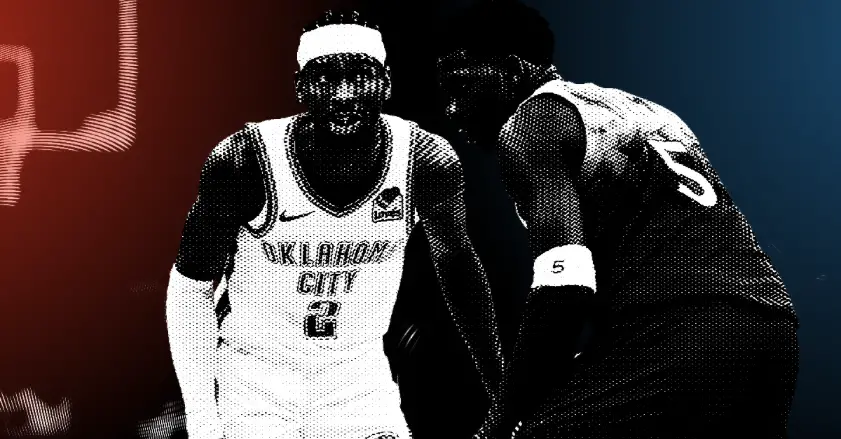Seattle may miss the Sonics, but even this analytics geek can’t help but cheer for the Oklahoma City Thunder. Their first trip to the West Finals since 2016 is proof that relocation hasn’t dimmed the city’s basketball fire. Across the bracket, the Minnesota Timberwolves—riding a dominant second-round sweep—bring their own blend of youth and efficiency. This series will be decided not by nostalgia, but by the cold, hard numbers.
Season & Playoff Context
Oklahoma City Thunder (1) finished the regular season 68–14, the best record in the NBA. In Game 7 of the Western Conference Semifinals, OKC routed the defending champion Denver Nuggets 125–93 behind Shai Gilgeous-Alexander’s 35 points and Jalen Williams’ 24 points. The turning point came in a massive 39–20 second quarter that blew the game open.
Minnesota Timberwolves (6) posted a 49–33 regular-season record and arrive at the Conference Finals fresh off a convincing 4–1 series win over Golden State. Their physical defense and balanced offense have kept opponents off-balance all postseason.
Key Analytics & Player Profiles
Shai Gilgeous-Alexander (OKC)
- Regular Season: 32.7 PPG, 6.4 APG, 5.0 RPG, TS% 51.9
- Playoffs: 29.0 PPG, 6.4 APG, 5.9 RPG in 11 games
- He’s posted a +27.7 net rating while on the court this postseason—elite by any standard.
Jalen Williams (OKC) exploded in Game 7 with a 24-point outburst, particularly dominating in the second quarter. His two-way versatility and ability to slash off the ball are crucial to OKC’s system.
Anthony Edwards (MIN) is the motor behind Minnesota’s offense, averaging approximately 24 PPG and 4.5 RPG in the playoffs while improving his efficiency with a TS% near 56%. His fearless shot-making and athleticism will be tested against OKC’s swarming defense.
Karl-Anthony Towns & Rudy Gobert (MIN) form a dynamic frontcourt. Towns is contributing 21 PPG and 9 RPG while shooting nearly 58% from the field. Gobert remains a dominant defensive anchor, posting one of the league’s best individual defensive ratings while also crashing the glass at an elite rate.
Tactical Matchups
Pick-and-Roll Efficiency:
Oklahoma City ranks in the top 3 in the NBA for points per possession off pick-and-rolls, thanks largely to SGA’s elite pocket passing. Minnesota counters with Rudy Gobert, whose 27% defensive stop rate in P&R coverage gives them a shot to neutralize OKC’s go-to weapon.
Bench Production:
OKC’s bench has delivered a +8.5 net rating throughout the playoffs, making them one of the deepest rotations in the field. Minnesota’s second unit is solid, though less consistent, hovering near break-even in plus-minus.
Pace & Turnovers:
The Thunder play at a brisk pace—roughly 101 possessions per 48 minutes—and lead the playoffs in forcing turnovers (16.2 per game). The Wolves play slightly slower but are disruptive defensively, generating steals on over 10% of opponent possessions.
Series Outlook
Fatigue vs. Rest:
The Thunder are coming off a grueling seven-game series, but their bench depth allows them to absorb heavy minutes. The Timberwolves, on the other hand, are well-rested after eliminating their semifinal opponent in five games. Expect OKC to push tempo early to test Minnesota’s legs.
Home-Court Edge:
Oklahoma City holds the best home record in the league (35–6), giving them a tangible advantage. Minnesota’s 25–16 road record is respectable, but they’ll need to steal one early to flip the momentum.
Data-Driven Edge:
If SGA sustains a playoff true shooting percentage above 55% (he’s currently just under), the Thunder’s offense will remain nearly unguardable. However, Minnesota’s even ORtg/DRtg balance (110/108) suggests a team well-equipped to grind out close games.
This series is a perfect blend of youth, efficiency, and grit. The Thunder’s firepower, defensive versatility, and home-court advantage make them the favorites on paper. But Minnesota’s rest advantage and interior strength—anchored by Towns and Gobert—could flip the script. Expect a chess match between two of the league’s best-coached, best-balanced teams. Analytics say the margins will be razor-thin—and that’s exactly how a Conference Finals should be.

